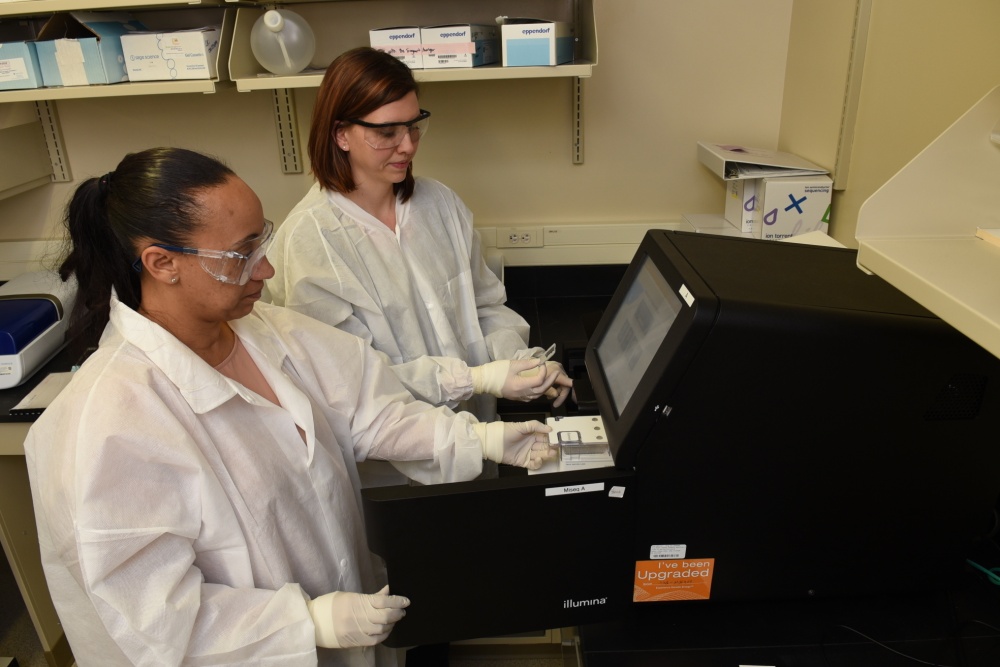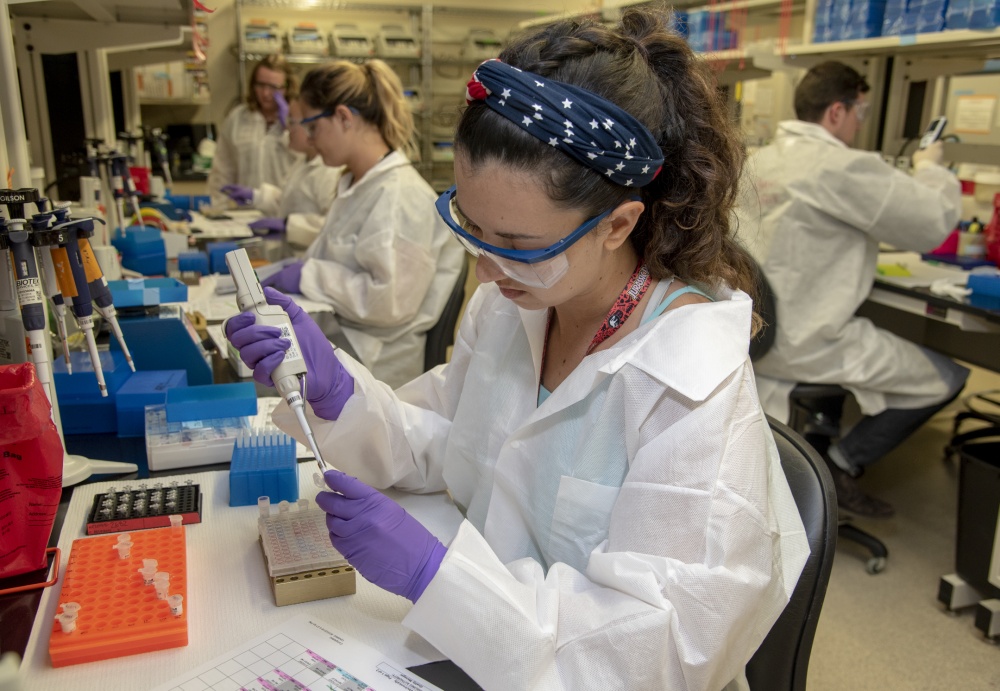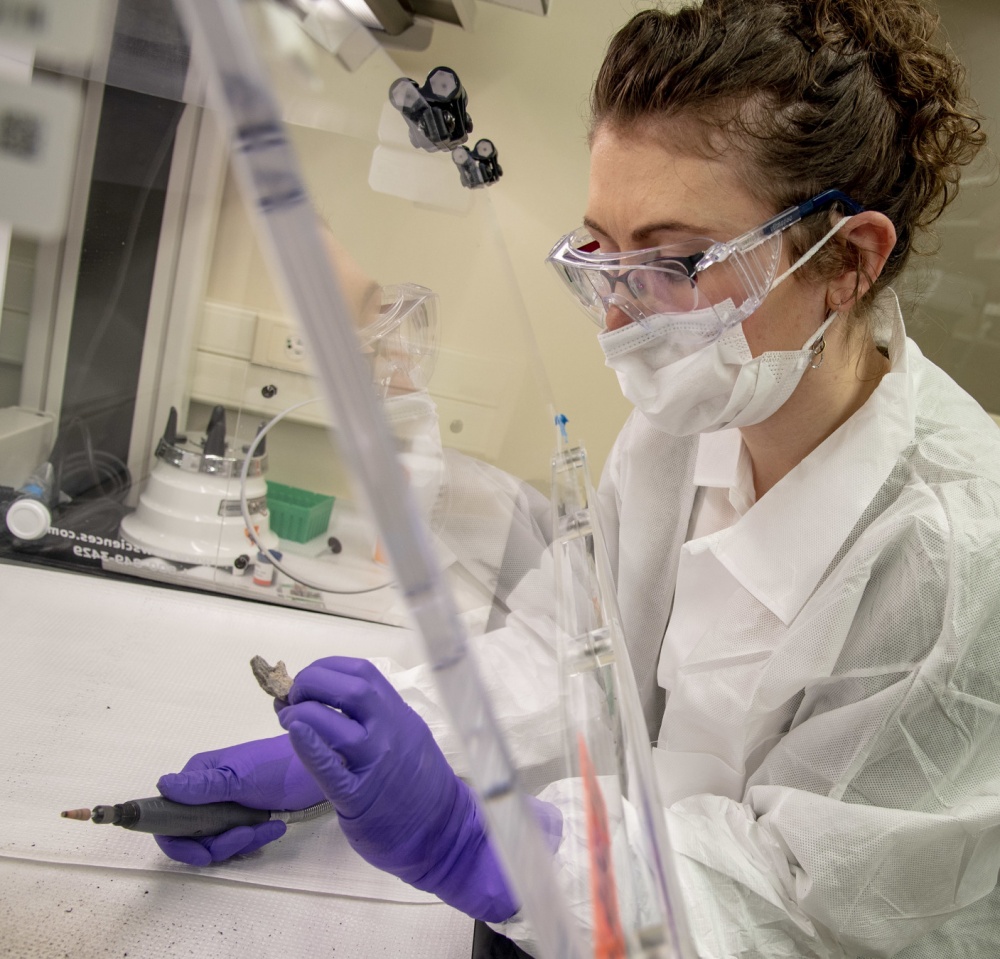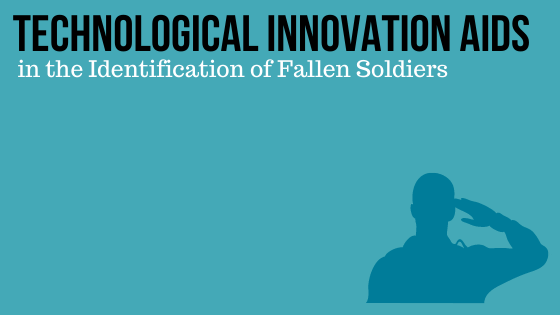Today’s blog is written by guest blogger Ken Doyle, Promega. Reposted from The ISHI Report with permission.
For just over five years, our family lived in a town 20 miles south of Dover, Delaware. There were no commercial airports in the state, and the only air traffic we saw were flights to and from Dover Air Force Base (AFB). The imposing gray bulk of the C-5M Super Galaxy and the somewhat smaller C-17 Globemaster III made them easy to spot as they flew overhead. These planes are used primarily to transport cargo and military personnel between bases and to troop deployment areas. Occasionally, you could discern small Falcon aircraft on the same flight path. Starting in 2007, these planes—operated by Kalitta Charters—were dedicated to serving a sacred mission: transporting the remains of fallen service members back to their families as the final stage in a process known as dignified transfer. The service is a somber and often emotional experience for the Kalitta crew members.
Dover AFB is home to the Air Force Mortuary Affairs Operations (AFMAO) whose primary mission is the commitment to honor the nation’s fallen soldiers and to support their families. The AFMAO operates the Charles C. Carson Center for Mortuary Affairs, which is the only one of its kind in the continental US. After arrival at the base, typically on flights from Ramstein AFB in Germany, the service members’ remains are transferred to the Armed Forces Medical Examiner System (AFMES) for identification.
AFMES supports the entire US federal government with a range of comprehensive forensic investigative services, with DNA analysis at the Armed Forces DNA Identification Laboratory (AFDIL) being a core technology. While AFDIL supports AFMES with DNA identification for present-day operations, some of its most challenging work lies in identification of unknown soldiers or those missing in action from historical conflicts (known as past accounting).
Mitochondrial DNA
AFDIL began using mitochondrial DNA (mtDNA) analysis in the early 1990s to identify service members recovered from Vietnam. In July 1998, the laboratory used mtDNA analysis to assist in the identification of First Lieutenant Michael Joseph Blassie. He was killed during the Vietnam War and laid to rest in the Tomb of the Unknown in Arlington National Cemetery. The identification process compared the mtDNA profile obtained from the unknown service member to mtDNA profiles from Lt. Blassie’s mother and sister.
All nucleated human cells contain two types of DNA: nuclear and mitochondrial. The human nuclear DNA genome constitutes approximately 3.2 billion base pairs (bp) of linear DNA wrapped into 23 pairs of autosomal chromosomes and one pair of sex chromosomes. The human mitochondrial genome is much smaller—approximately 16,500bp—and is a circular molecule. Different cell types contain different numbers of mitochondria in the cytoplasm, with oocytes containing up to 600,000, and each mitochondrion contains a single copy of mtDNA.

Due to the high abundance of mtDNA compared to autosomal DNA, it can prove useful for analysis in degraded samples with limited amounts of DNA. Mitochondrial DNA is inherited only in the maternal lineage, making it easier to trace family relationships further back in time compared to nuclear DNA. In a similar fashion, Y-chromosomal DNA is valuable for tracing paternal lineage.
In contrast to short tandem repeat (STR) analysis that is typically conducted in forensic laboratories for nuclear DNA, mtDNA analysis relies on DNA sequencing to map individual base changes, or single-nucleotide polymorphisms (SNPs), between samples. Technological advances over the years have made this method more powerful than ever.
Technological Challenges
For 20 years, AFDIL has been working on identifying the remains of service members from the Korean War. These remains were transferred from North Korea to Japan in 1953 and were buried in the National Memorial Cemetery of the Pacific in Hawaii, colloquially known as the Punchbowl.
“Within the cemetery are known and unknown service members from World War II, Korea and Vietnam,” says Timothy P. McMahon, PhD. He is the Director of DoD DNA Operations (AFDIL and AFRSSIR) AFMES. He serves as the chief scientist and scientific subject matter expert to the Armed Forces Medical Examiner, overseeing all human remains DNA testing and initiatives in support of the AFMES mission to identify fallen US service members from present and past accounting, as well as national disasters.
Some of the unknown remains from the Punchbowl—approximately 800 soldiers—were chemically treated and are from the Korean War, while unknowns from World War II were not treated. The treatment methods caused significant damage to the DNA, complicating the identification process. “It took 16 years of research, and for science to catch up, to allow AFMES-AFDIL to identify that the average DNA length from Punchbowl samples was ~50bp,” Dr. McMahon says. The small size of the recovered DNA made these samples recalcitrant to conventional Sanger sequencing techniques.
AFDIL’s adoption of next-generation sequencing (NGS), also known as massively parallel sequencing (MPS), raised hopes for increasing the success rate of identification. NGS enables processing of many samples simultaneously, starting with extremely low amounts of DNA. However, there’s another challenge with using this technology to analyze historical human remains, in addition to DNA degradation. Often, the extracted sample contains a large proportion of non-human DNA, much of which is bacterial DNA. To overcome these challenges, AFDIL turned to their emerging technology division headed by Dr. Charla Marshall. She is currently Chief of the Emerging Technologies Section, SNA International, and a contractor supporting AFMES-AFDIL. In 2015, her team validated a modification of the typical NGS workflow, known as hybridization capture or target enrichment.

“This was the first NGS method to be implemented in an accredited forensic laboratory worldwide,” Dr. Marshall says. The procedure has since been used to obtain DNA profiles from the most severely degraded and formalin-preserved remains from World War II, the Korean War and Vietnam, leading to hundreds of NGS-based identifications. Dr. Marshall points to the average length of DNA fragments from Punchbowl samples of 50bp. “This fragmented nature of the DNA led to polymerase chain reaction (PCR) amplification failure of both STR and SNP targets,” she says, because most PCR primers were situated >100 base pairs apart. However, the use of hybridization capture and NGS allows analysts to obtain a usable DNA profile.
Hybridization Capture and Sequencing
How does this approach work? In a standard hybridization capture workflow, NGS libraries containing a mixture of human and non-human DNA sequences are treated with specially designed DNA or RNA probes or “baits” that contain sequences of interest. In the validated AFDIL technique, the probes would include human mtDNA sequences spanning the entire mitochondrial genome. The probes hybridize to complementary DNA sequences in the sample libraries and are attached to a solid surface, such as magnetic beads or a microarray. Non-hybridized, unwanted DNA is washed away, leaving only the desired DNA that can then be amplified and sequenced. In the case of highly degraded DNA samples, which may contain a lot of bacterial or fungal DNA, a hybridization capture step may help enrich for human DNA targets.
Hybridization capture technology “successfully allowed for the first identification of a Punchbowl unknown on March 17, 2016,” Dr. McMahon says. Over the last 5 years, the success rate of the NGS method has increased from 28% to 68%, according to Dr. McMahon. “We have run 2,365 tests and written over 400 DNA comparison reports, of which 175 have supported new identifications.” He adds that those 175 individuals would have remained unidentified without the use of hybridization capture and NGS technology.
Compared to conventional STR analysis, hybridization capture followed by NGS offers greater chances for success when it comes to identification of historical remains. “In AFMES-AFDIL past accounting casework, STR typing often results in partial or failed STR profiles that have minimal evidentiary value for decades-old missing persons cases requiring kinship analysis,” Dr. Marshall says. A complete analysis, therefore, may require mtDNA in addition to STRs, and may soon include SNPs as well.
Forensic laboratories considering a hybridization capture MPS workflow have a choice: implement the technology in house or outsource it to a service provider. For those developing an in-house workflow, Dr. Marshall recommends using automation wherever possible, and working with a vendor who can assist with method development and validation. “Hybridization capture is labor-intensive when performed manually,” she says, “and this can slow down validation studies, material modifications and, of course, casework.”

Forensic Genetic Genealogy
Although mtDNA is more abundant, nuclear DNA provides more information, because the much larger genome contains more SNPs. To compensate for the relatively low proportion of nuclear DNA in degraded samples, it can be enriched for regions of interest using hybridization capture. “SNP capture allows us to focus our sequencing efforts on identity-informative SNPs for improved coverage and higher confidence in the genotypes obtained from the sample,” Dr. Marshall says.
This type of information could be especially useful for identification using forensic genetic genealogy (FGG)—a method that has gained attention in high-profile criminal investigations after it was used to capture the Golden State Killer. In a nutshell, after developing a DNA profile, analysts use it to construct family trees using public genealogical DNA databases, which could eventually lead them to the identity of the suspect.
Dr. McMahon adds that AFMES-AFDIL has partnered with Parabon Nanolabs to develop genealogically relevant SNP panels that would enable anyone within four generations of a missing service member, regardless of relationship, to provide a viable reference sample. Initial development tested existing commercial SNP panels that did not work with AFDIL’s typical casework samples. The research team and Parabon developed new SNP hybridization capture panels and analytical software specially designed for highly degraded, low-coverage samples. The process is currently undergoing extensive internal validation that meets all Federal Bureau of Investigation (FBI) Quality Assurance Standards and ISO-17025 Forensic Accreditation Standards. “The method developed will have the ability to utilize all current references that have been collected for our missing service members, as well as any future collections,” Dr. McMahon says.
While controversy still surrounds the use of FGG in criminal investigations, Dr. McMahon notes that it is important not to confuse that application with its potential use in identifying missing service members or historical remains. “FGG is simply a process that uses genetic similarities between two individuals to establish familial relationships to generate the investigative leads,” he says. Once the technology is perfected, the next step will be to develop policies that address the unique needs of implementing FGG to identify historical remains of service members. These policies must take into account the privacy concerns associated with the use of genealogical DNA information.
Next Steps
What does the future hold for the identification of historical remains at AFMES-AFDIL? Both Dr. Marshall and Dr. McMahon agree that workflow automation will play a major part. Dr. Marshall would like to see “an automated workflow from bone powder digestion through sequencing setup.”
“The assay we are developing and publishing will work across all sample types from highly degraded historical remains to high-copy modern samples,” Dr. McMahon explains. He lists workflow automation as essential to increasing sample throughput and making the process cost-effective. In addition, Dr. Marshall and Dr. McMahon identified the need for a core set of identity-informative SNPs to be standardized and admissible for CODIS—the centralized DNA database developed and maintained by the FBI.
For commercially developed kits, Dr. McMahon hopes to see the availability of “a highly tailorable kit that has SNPs, mtDNA, autosomal STRs, and Y-STRs, with protocols on how to just target individual sets, or to combine two or more together to get more results at one time.” These innovations, together with well-defined policies surrounding the use of FGG, will provide new hope to the families of missing service members and, ultimately, give names to those simply listed as “unknown soldiers.”
WOULD YOU LIKE TO SEE MORE ARTICLES LIKE THIS? SUBSCRIBE TO THE ISHI BLOG BELOW!
SUBSCRIBE NOW!


